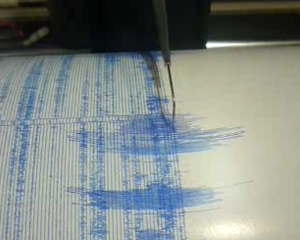Many of the buildings in the main street and quite a few older houses, mostly built before 1930, are of that sort of construction, says Dunedin City Council chief building control officer Neil McLeod.
"But I can't answer how we would fare [in an earthquake] because it would depend on where it was and what form it took."
Mr McLeod gives the municipal chambers and the railway station as two examples of buildings that have been strengthened but could not provide a complete list. He was also wary of labelling some buildings as dangerous and causing panic.
The Otago civil defence emergency management group plan states a significant portion of the city's building stock, including the many historic buildings, pre-dates modern earthquake design.
Before the 1931 Hawke's Bay earthquake, there was no building code in New Zealand.
He does not expect any problems with properties built since the 1970s.
Development services manager Kevin Thompson says the council completed a "desk-top screening" of Dunedin's building stock about a year ago, to identify those buildings which were obviously not earthquake-prone.
More detailed assessments are required for those that were not eliminated during this process.
The council's earthquake-prone buildings policy, which applies to everything except residential buildings, sets out specific timeframes in which owners must have a structural engineer assess their properties and carry out any necessary remedial work.
Properties that were built before 1935 and are where a lot of people gather or have high value to the community must have any necessary remedial work done by 2025.
These include schools, structures over four storeys and buildings with a normal occupancy of 500 people or more.
It also applies to pre-1965 premises that would have post-disaster functions, such as hospitals and police stations.
Properties built before 1935 and that hold small crowds or have moderate value to the community must be upgraded by 2035.
Examples of these are hotels, offices and apartments of fewer than four storeys.
Owners are also required to strengthen at-risk premises when changing their use or carrying out alterations.
The Christchurch City Council has changed its building policy in the wake of the recent earthquake, requiring damaged, earthquake-prone buildings to have structural strengthening to 67% of building code levels - the same target Gisborne set after its 2007 earthquake.
Dunedin has a similar threshhold but only when there is a change to a building's use.
However, Mr Thompson says the council is reviewing its policy and will look at whether it needs to have a similar requirement to Christchurch in light of what happened there.
Historic Places Trust Otago-Southland area manager Owen Graham says the trust has been advocating nationally for strengthening to 67% of building code levels but appropriate incentives are needed to encourage owners to do it - and to do so in a positive manner rather than seeing it as a negative.
Raising the strengthening requirements could see owners defer work for as long as possible, leading to demolition by neglect, which is not what anyone wants.
Some financial assistance is available through the Dunedin Heritage Fund but the real issue will be how local and central government respond to the issue of keeping significant buildings in older towns like Dunedin.
The city has about 400 category 1 and 2 historic buildings and part of its economic livelihood is built, literally and figuratively, on them.
What's being done
• A screening has been completed to rule out those buildings that are not earthquake prone.
• Properties built before 1935 and where a lot of people gather must have remedial work done by 2025. Pre-1965 premises that would have post-disaster functions, such as hospitals and police stations must do the same.
• Properties built before 1935 and that hold small crowds, such as offices, must be upgraded by 2035.
• Owners must strengthen at-risk premises when changing their use or carrying out alterations.





